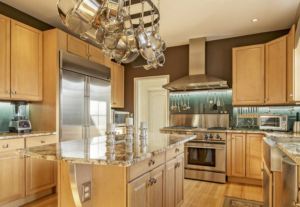
You’re probably wondering, is quartzite related to regular quartz or some other natural stone, like granite or marble, and why haven’t I heard about it before? You might have heard about it in passing, especially if you are looking for a newer and innovative way to update your countertops. So, knowing more about quartzite is probably important to you. So, here is a little bit of everything you might want to know about quartzite but were afraid to ask.
Quartzite Fabrication
One reason why quartzite is not as prevalent in the marketplace could be due to its limited availability. In the past, the time involved with fabricating quartzite was anywhere from 16-20 days. Also, with quartzite being an extremely hard material, it was not easily processed for exportation from various overseas suppliers.
Today, because of improved technology, fabrication of quartzite involves 16-20 hours of preparation time as opposed to the 20 days. With that in mind, quartzite is more readily available.
Quartzite Origins
You’re also probably wondering how quartzite formed and what it actually is in geological terms. Quartzite comes from grains of sand that have been compacted and fused together over a long period of time. These grains and layers of sand experienced transformation. The original grains (of actual quartz stone) were subject to high heat and pressure that caused a change in their physical appearance and chemical makeup. The process turns the sand into an extremely hard, dense and heavy, yet compact stone, identified as quartzite.
Metamorphic Stone
Quartzite is categorized as a metamorphic stone, which means that it has undergone change over time. It is further categorized as a non-foliated metamorphic rock, which means that the stone does not exhibit a layered or banded consistency or appearance. Quartzite will show deep veining which was caused during the high pressure stage of its transformation. With such an extended period of change, much of quartzite is white in consistency, making it similar in appearance to white marble.
Quartzite Aspects and Features
- very dense and compact stone – making it difficult to stain
- hardness factor of 6.5 on the Mohs scale
- marble-like appearance with incredible durability
- nominal veining for soft and simplistic design
- comparatively new and innovative material
- exclusive and limited stone product
- higher retail price point due to overseas quarrying, fabrication and production costs
- harder consistency that permits in depth polishing and surface smoothing
- higher light reflection factor, glossiness and depth
- heat, scratch and etch resistant
- true quartzite lacks calcium carbonate, which deters etching issues
- increases the overall value of a home
- fairly easily maintained – repels even acidic food and products
Real Quartzite as Opposed to Marble
Quartzite products can often be confused with marble and occasionally they are mislabeled. Inappropriate labeling can lead to marble materials being offered as quartzite. Several examples of inappropriately labeled stones include:
- Dolomitic marble – not a quartzite product
- Iceberg Marble – not a quartzite product
In order to determine what is real quartzite as opposed to marble, or some other material, try the scratch test. Simply scratch the stone using one of your car keys, a piece of granite, glass, or something made of steel. Actually try to chisel or carve away on it. If steel damages the stone, the stone is not genuine quartzite, which likely makes it marble. If a car key is ineffective in scratching or carving the stone, it probably means the stone is quartzite.
True Quartzite Products
Some genuine quartzite products include the following:
- Caracas
- Naica quartz
- Quartzite Cielo
- Renoir quartzite
- Taj Mahal
- Tempest
- White Macaubas
With design trends seeming to indicate a move towards the use of quartzite, there are going to be increasing numbers of homeowners and others interested in what quartzite offers. if you are curious and are contemplating using it, you simply need to remember its origin as well as its noted features and aspects, its cost for budgeting purposes and whether it is the genuine article, not to be confused with marble. If you need further explanations as to quartzite’s features and characteristics, complete the online contact form and a representative will be happy to answer any of your questions.






